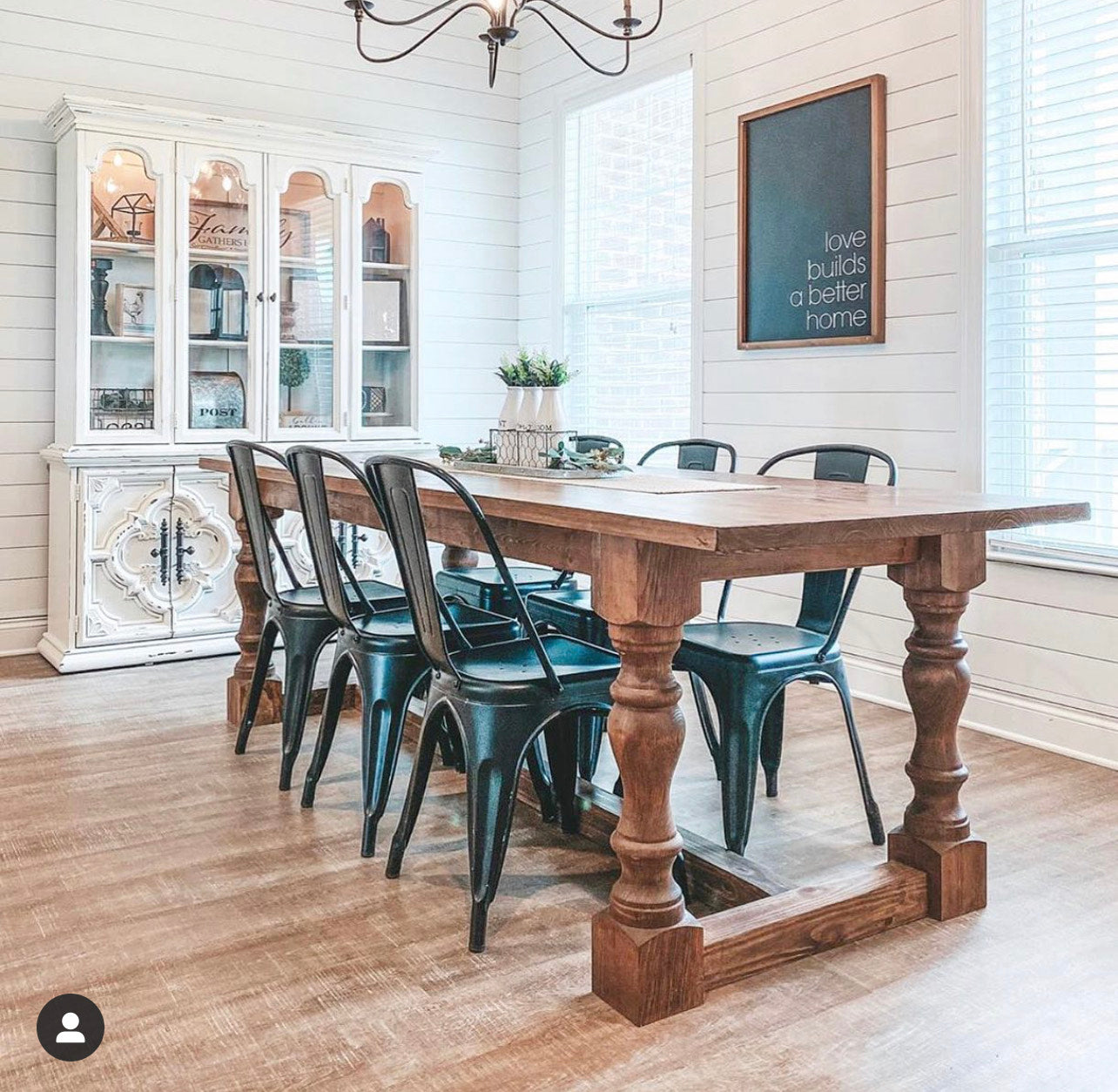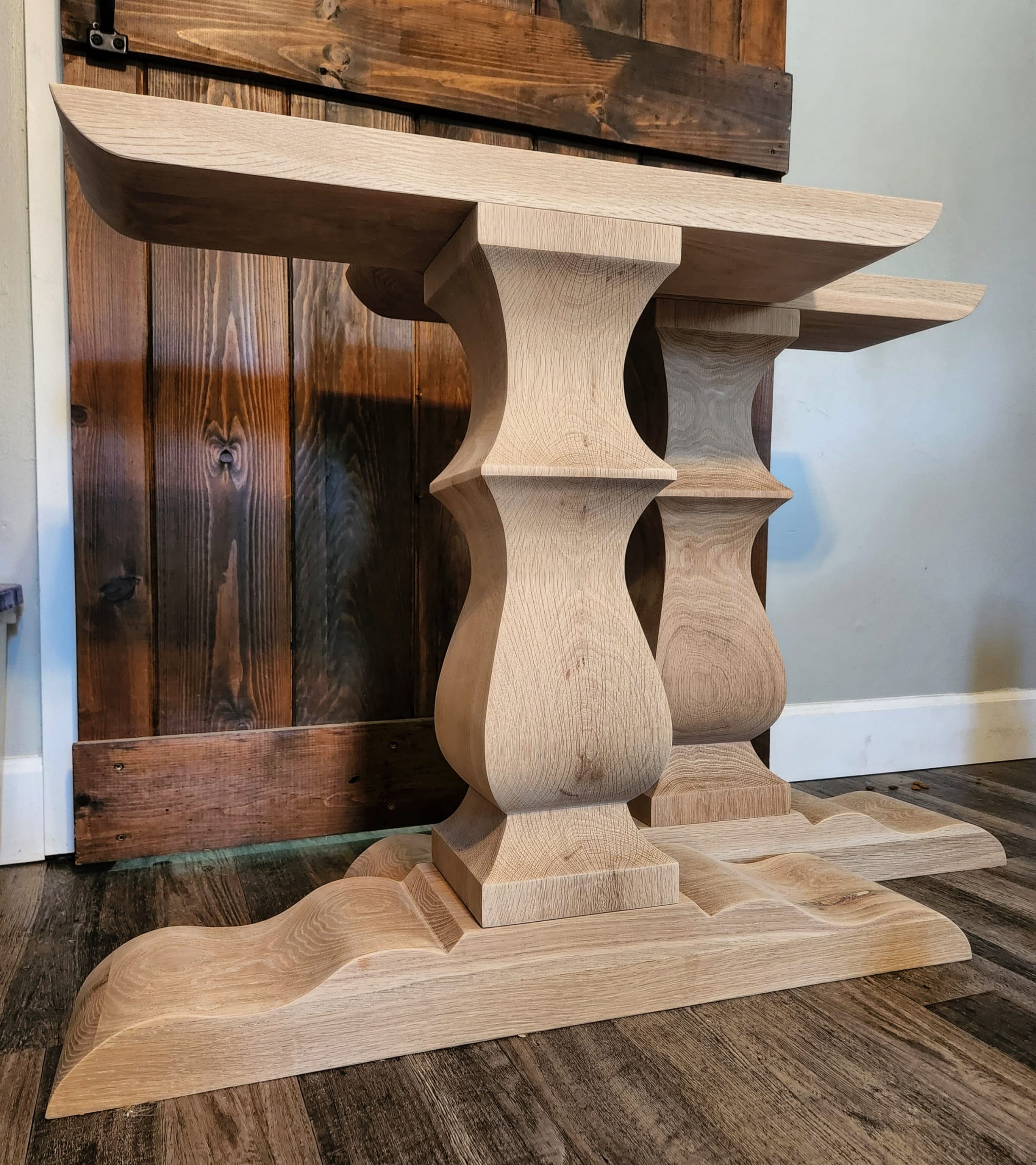Why Custom Dining Room Table Legs Are Worth the Investment
Why Custom Dining Room Table Legs Are Worth the Investment
Blog Article
From Conventional to Modern: Locate the Ideal Dining Space Table Legs for Your Design
The option of dining-room table legs plays a critical function in specifying the overall character of your space, connecting the space in between traditional craftsmanship and modern looks. While classic styles such as cabriole and transformed legs stimulate a feeling of timeless elegance, modern styles like barrette and geometric alternatives provide a chance for striking aesthetic interest. Examining the best balance in between these designs needs a nuanced understanding of your existing decoration and personal taste. As you think about these aspects, the inquiry continues to be: just how can you effortlessly incorporate these diverse leg designs to create a harmonious dining experience?
Comprehending Table Leg Styles
The range of eating room table leg styles can significantly affect both the aesthetic appeals and performance of the space. Each leg design adds special functional functions and visual components, dealing with diverse layout choices and usage requirements. Recognizing these designs is vital for choosing the best table that lines up with your overall interior decoration vision.
As an example, conical legs provide a tidy, classic appearance that can boost a space's beauty, while stand bases give stability and make best use of legroom, making them suitable for smaller spaces. Hairpin legs, a hallmark of mid-century contemporary layout, present a commercial style, permitting an airy, open feeling. Trestle legs stimulate rustic appeal, providing robust support and a feeling of eternity.
Wooden legs can bring heat and appearance, whereas steel alternatives usually share a smooth, modern ambiance. Ultimately, comprehending table leg styles is important for developing a natural eating location that mirrors individual design while ensuring practicality and comfort.
Standard Table Leg Options
When picking dining-room table legs, traditional options frequently symbolize timeless elegance and craftsmanship. These designs mirror an abundant heritage and a commitment to top quality, making them optimal for those that value classic aesthetics.
Among the most iconic standard leg designs is the cabriole leg, characterized by its stylish curved shape. This design frequently includes ornamental carvings and is most commonly found in Queen Anne and Chippendale furnishings. An additional popular choice is the transformed leg, which boasts a collection of smooth, rounded forms that provide a classic look while maintaining stability.
Additionally, the straight leg, while straightforward, offers a sturdy and unadorned framework that can blend flawlessly with a selection of tabletop styles. For those drawn to ornate describing, claw-and-ball feet legs stimulate a sense of grandeur and can offer as a magnificent focal factor in any kind of dining room.
Finally, pedestal bases, although not strictly legs, give an alternate standard choice that enables for ample legroom and can be beautifully carved. Each of these traditional browse this site leg designs adds to the general ambiance of a dining-room, weding feature with aesthetic allure.

Modern Table Leg Designs
Modern table leg designs offer a diverse series of designs that highlight ingenious materials and clean lines. These styles usually focus on functionality while serving as striking centerpieces within a dining room. Minimalist looks prevail, with legs crafted from products such as steel, glass, and crafted timber, which add to a airy and modern feel.
One preferred style is the barrette leg, defined by its slender, conical framework that offers security without overwhelming the tabletop (dining room table legs). This style is often discovered in mid-century modern-day furniture and can effortlessly match various eating table shapes. Another fad is making use of geometric shapes, where legs may tackle angular or asymmetrical types, adding aesthetic passion and a touch of artistry

Blending Styles for Special Areas
Typically, property owners look for to create distinct eating rooms that mirror their individual design by mixing numerous style elements. This strategy enables the incorporation of diverse aesthetic appeals, resulting in an unified yet distinctive setting. Matching a rustic wood table with sleek, modern-day metal legs can develop an appealing comparison that boosts the room's general allure.
Furthermore, integrating vintage table legs with contemporary table tops can evoke a sense of background while keeping a modern sensibility. Such mixes not only showcase specific taste next page however likewise encourage imagination, enabling property owners to curate an area that really feels both individual and inviting.
Color plays a vital duty in this mixing procedure; picking table legs that complement or comparison with the existing color system can enhance visual passion. For instance, whitewashed legs can soften the boldness of a dark table surface area, developing a balanced aesthetic.
Tips for Selecting the Right Legs
Picking the right table legs is essential for attaining both performance and aesthetic charm in your eating space. Begin by thinking about the total style of your area. Conventional setups gain from legs that include elaborate makings or turned layouts, while contemporary areas might require sleek, minimalist designs.
Next, analyze the elevation and security of the legs. dining room table legs. Basic table vary in between 28 to 30 inches in elevation, so guarantee the legs match this dimension for convenience. Furthermore, robust materials, such as hardwood or metal, can enhance stability and longevity
Assess the leg shape as well-- options consist of directly, tapered, or stand designs. Straight legs supply a timeless appearance, while tapered legs can include a touch of sophistication. Pedestal bases give ample legroom and are perfect for smaller rooms.
Verdict
In recap, picking the ideal dining-room table legs needs mindful consideration of both conventional and modern-day designs. Traditional options such as cabriole and transformed legs use classic elegance, while modern-day layouts like hairpin and geometric forms supply a contemporary touch. By harmonizing leg design, elevation, and material with the overall decoration, a natural and welcoming atmosphere can be achieved. Ultimately, the chosen table legs ought to reflect the desired aesthetic, boosting the dining experience within the space.
The range of dining space table leg styles can substantially influence see page both the appearances and performance of the space. Ultimately, recognizing table leg styles is necessary for creating a natural dining area that mirrors personal style while guaranteeing practicality and convenience.One of the most renowned typical leg styles is the cabriole leg, defined by its graceful rounded form. Straight legs supply a classic appearance, while conical legs can add a touch of beauty.In recap, picking the suitable dining area table legs needs careful consideration of both conventional and modern styles.
Report this page